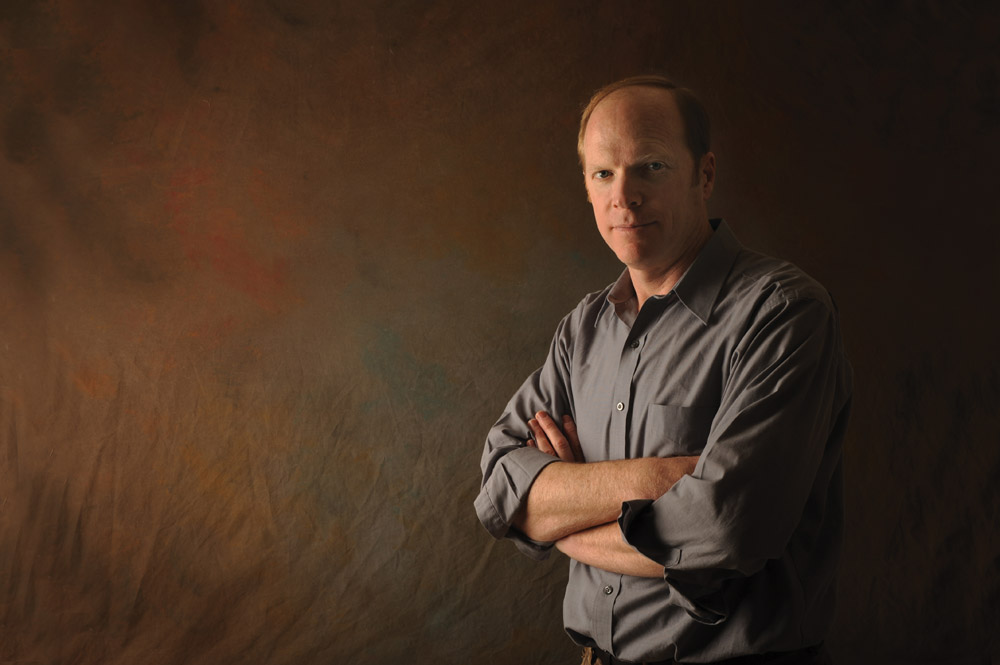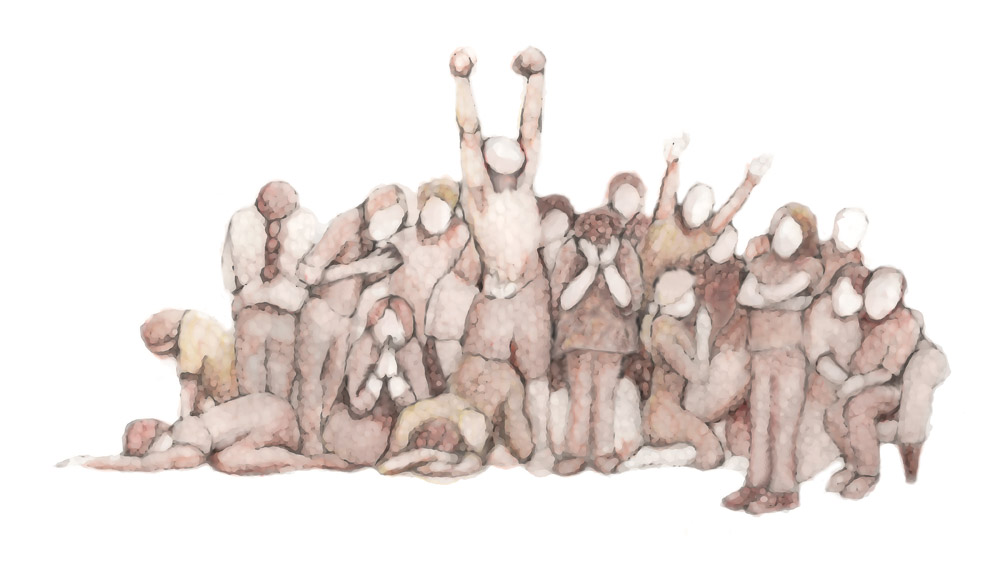What Is Character and How Do We Get it?
by Lauren Bryant
 Philosopher Charles Starkey says you can’t find character in a static list of traits. You need values, and those involve emotion.
Philosopher Charles Starkey says you can’t find character in a static list of traits. You need values, and those involve emotion.
Last fall, after I said goodbye to my twin daughters at college, after I hauled their refrigerators and microwaves, smoothed their sheets, and lectured them one last time about “making good choices,” I hugged each of them tight and turned away thinking, So this is it. All I can do now is hope something I’ve said or done in the last eighteen years sticks. In short, I could only trust that my daughters had good character.
But how could I know for sure? Where does character come from, and what makes it persist? What is character, really?
Philosophical questions, to be sure, for which philosopher Charles Starkey has some answers. Starkey is one of a few philosophers participating in The Character Project, an international and interdisciplinary research initiative with the aim of moving the study of character forward. He’s also an associate professor of philosophy in the Department of Philosophy and Religion. Starkey has long been interested, he says, in “age-old questions about human behavior, how we behave and how we ought to behave”— in short, questions about character.
Traits and values
Since the age of the ancient Greeks, philosophers have been discussing character; in the last twenty to thirty years, Starkey notes, broader interest in character traits—fostering good ones, avoiding bad ones—has surged. Think of Robert Bellah’s The Good Society, William Kilpatrick’s Why Johnny Can’t Tell Right from Wrong, William Bennett’s Book of Virtues (a book I recall my daughters receiving as toddlers), or the recent The Social Animal: The Hidden Sources of Love, Character, and Achievement by David Brooks.
Amid this resurgence of interest—“Responsibility. Courage. Compassion. Honesty. Friendship. Persistence. Faith. Everyone recognizes these traits as essentials of good character,” reads the back of Bennett’s book—Starkey sees a problem. “Everyone” may agree on which traits are good and which are bad, but according to Starkey, there has been little analysis—among academics or in more popular media—of what character traits actually are.
This lack led Starkey to undertake what he calls his “basic research” on character traits. Starkey’s goal is to develop a robust new theory about character traits—their components and their relationship to human thought, feeling, and action. His approach incorporates psychological research relevant to human choice and behavior.
So what are character traits? They are not simply virtues, Starkey is quick to point out. Cowardice and arrogance are character traits, but hardly virtues. Neither are character traits simply firm beliefs—like a belief in the force of gravity–or habits, like your nightly devotion to brushing your teeth.
In Starkey’s view, character traits are deeply rooted in and determined by values. “Our specific character traits are a product of which values come to the fore and drive our behavior,” he says.
Take the character trait of generosity. Your neighbor may be the most generous person you know; that trait of generosity, Starkey explains, involves a value she places on caring about the wellbeing of others. Or consider honesty. A person is not honest if he “consistently but accidentally tells the truth,” Starkey says. Honesty involves placing a high value on accurate representation over other values and acting accordingly.
If character traits are tied to certain sets of values, as Starkey holds, and we act in particular ways that represent our particular values, that’s good news, I think. If my daughters have absorbed values of responsibility and conscientiousness, that bodes well as they launch themselves from the nest, right?
Yes, but in Starkey’s theory, values can, and do, change.
“Character traits are tied to values, but values are not static things,” he says. “The perceived importance of a value is not fixed. Values have a force in our lives, but a value’s force can diminish.”
The role of emotion
What keeps a value strong, or not? Emotions, says Starkey.
You might think of Starkey’s theory about character like a Russian nesting doll: First there is a character trait; within that, a value or set of values sustains that character trait; at the core are emotions—fear, pride, joy, anger, sorrow, and the like.
“Emotions play a central role in maintaining values, and because of this, they are necessary for the possession of character traits,” Starkey says.
Emotions underlie our character traits in two key ways, according to Starkey. First, emotions determine what we see and know. Evidence from various studies demonstrates that emotions affect what we pay attention to, how we see the object we’re attending to, how much information we process about what we’re paying attention to, and how much importance we give to what we are seeing.
For example, negative emotional states cause “funneling” in our field of awareness; fear or anxiety or other negative emotions narrow our focus. At the same time, intense emotions affect how we process what we perceive—sharpening our information gathering, signifying importance, and increasing creation of long-term memories.
“When we have an emotion at a certain time, it affects how we actually see an object and our interpretation of its import,” Starkey says. “And of course, how we see, understand, and remember things affects how we end up acting.”
The second key role of emotions is, they keep values alive. Starkey likens this connection to examples from psychological conditioning—studies in which a neutral image and a frightening sound are associated, until the subject begins to fear merely the image itself.
Similarly, we come to associate certain emotions with certain values—joy at a display of courage or anger in the face of cruelty. We make these associations as we witness the emotional responses of others to certain acts as well as when we observe the attitudes of others in response to something we do. Such emotional associations reinforce our sense of the value behind the act (of courage, cruelty, etc.).
Without emotional reinforcement of a value’s importance, the values themselves fade. By way of example, Starkey points to the decline of “honor culture” (a high value placed on preserving honor and reputation) in this country.
“Honor doesn’t have the same level of importance that it did, say, two hundred years ago,” Starkey notes. “Honor just doesn’t mean what it used to. And because it’s less significant, we’re less likely to act for the sake of honor.”
All sorts of values could go the way of honor, Starkey says, but they don’t because those values are continually reinforced.
This link between emotions, values, and character raises a question, though: In the United States, we often consider people of “strong character” to be dispassionate, devoid of messy and distracting emotions that may “cloud one’s judgment.” Isn’t all this emotion a bit of a liability when it comes to choosing how we will behave?
Starkey acknowledges that “sometimes acting correctly and thinking correctly involve putting emotions aside.” In times of crisis—a crippled airliner, for example—we value the pilot who sets aside terror to focus dispassionate attention on what matters in the moment. For the most part, though, Starkey argues that emotions are by no means dysfunctional.
Think of anger. Most of us would call that a “bad” emotion, but “appropriate anger,” Starkey says, is very useful. In situations of injustice, for example, anger can motivate us to address social or political change, where being unemotional could work against us.
“As Aristotle proposed, the key is emotion in the right amount, at the right time, and directed at the right object,” Starkey says.
Adaptable but slow to change
In Starkey’s view, emotions are adaptable. We can learn to temper what we respond to emotionally and how strongly we respond. This happens through familial, social, and cultural conditioning. All those environments offer feedback that gives us a sense of the appropriate sort of emotional response to a certain value being enacted.
It’s something like advertising, says Starkey. We learn through repetition. Our emotions and values are instilled through repeated, overlapping exposures to particular behaviors and reactions.
If emotions and values can be conditioned in this way, then can character be taught, as so many character education programs of the last two decades have asserted? Starkey offers a qualified yes, he says, “but it’s a complex answer.”
Complex, because instilling a value—making that value salient for a person—is very different from teaching someone a particular belief such as the sun will rise tomorrow in the east.
“Fostering a character trait is not like teaching someone a fact about the world,” Starkey says. “Character isn’t something that changes easily or quickly.”
This is because character traits are deep-seated in us, Starkey says, and “that deep-seatedness takes a lot of work to modify. You have to work and work and work on it.”
When it comes to character education, “there is no quick fix and no narrow fix,” Starkey says. But changes can be had by paying attention to the values and emotions associated with the character traits being promoted.
“If you want to change character, focus on value and emotions,” Starkey says. “Unless the value is repeatedly emphasized in a variety of contexts, ‘character education’ won’t stick. Such education needs to be much more broad-based, supported by a much broader network of family, community, and social reinforcements.”
Character education is just one of the areas where Starkey sees potentially helpful applications of his model concerning the fundamental nature of character traits. His work, he says, may also further research on “consciousness raising” about emotional messages in media and how those messages affect our values, for example, as well as support critical reflection on our values and traits, not just as individuals, but as a society. Pointing to the Fascist movement in Germany and the value it placed on authority, Starkey says “My research could help us critically look at how we reinforce and sustain our societal values and how we might change them.”
Currently, Starkey’s research also involves collaboration with Cynthia Pury in the Department of Psychology. They are developing a new theory of courage, based on a large body of psychological research, including their own studies.
“The only person to be awarded both the Carnegie Medal for heroism and the Medal of Honor was a Clemson graduate [Jimmie Dyess],” says Starkey. “We’re working to understand the psychological processes underlying courageous behavior.”
I think back to Starkey’s description of his original research interest—“questions about human behavior, how we behave and how we ought to behave.” We all know people who have surprised us—shocked us by doing “the right thing” after so many years of wrong or by making choices so painful they seem beyond understanding. Starkey’s research gives us some insight into where such human behavior comes from, and for better or worse, how it can change.
Meanwhile, with respect to my college-age daughters, time will tell. Their first semester ends soon. I remain hopeful.
Charles Starkey is an associate professor of philosophy and a fellow of the Rutland Institute for Ethics in the College of Architecture, Arts, and Humanities’ Department of Philosophy and Religion. He is currently completing a book manuscript covering his theory of emotions, values, and character. His work on the manuscript was made possible in part by a research grant from The Character Project, which is supported by the John Templeton Foundation. Starkey has also been the coach of the national champion Clemson University Ethics Bowl public policy debate team.
Lauren J. Bryant is a writer living in Bloomington, Indiana. Photo of Charles Starkey by Patrick Wright.



